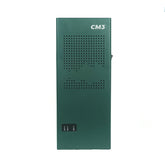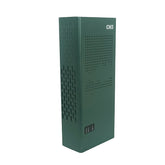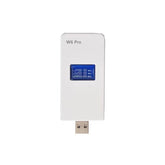Telecommunications companies hate cell phone jammers
I once had a great idea. Develop a device that interferes with mobile phones by broadcasting signals at close range in the same frequency range used by mobile phones. Very suitable for libraries, theaters and good restaurants, in these places you don't want your kid's cell phone to ring JZ latest hit songs when mom calls. As with most good, simple ideas, it's done, and the Jammer is a great invention.
Telecommunications companies really hate the idea of cell phone jammer. Interference will reduce the time we spend on cell phone bills and cost them millions of dollars. On the other hand, in some public places, we will all be disturbed. We don't care too much. Concentration of diversified costs and benefits.

Travis Larson, spokesperson for the Cellular Phone Industry Association, said: "You are not allowed to set up roadblocks on the street in front of the house because you don't like to hear ambulances." Stop emergency calls. "Like roads, radio waves are public property."
Bluelinx chairman Jeff Griffin said he was trying to sign contracts with wireless service providers and institutions such as coffee shops and theaters. He said he hoped to start using the device in the next few years. He said the jammer call blocking system is optional for mobile phone users and can be turned on or off.
In Lawrence Lessig's “Code and Other Laws in Cyberpace” he argues that there are four forces you can use to solve societal problems: culture, law, architecture and the market. We are trying to use three quarters here to control annoying cell phone issues.
By design or by accident, but completely legal, another method is to block cell phone signals using construction technology. Bill Sewell, senior vice president of DMJM Technology, said: (Like most cell phone blocking methods, FCC spokespersons don't have building material regulations.) been advanced for military and espionage purposes a long time ago. It took several years to design a radio security zone for the US government.
Mr Sever said the method his company uses is simple: adjust the wire mesh to the frequency of the radio waves and mount it on the wall. He said they are also very inexpensive, around $ 15 per square foot.













